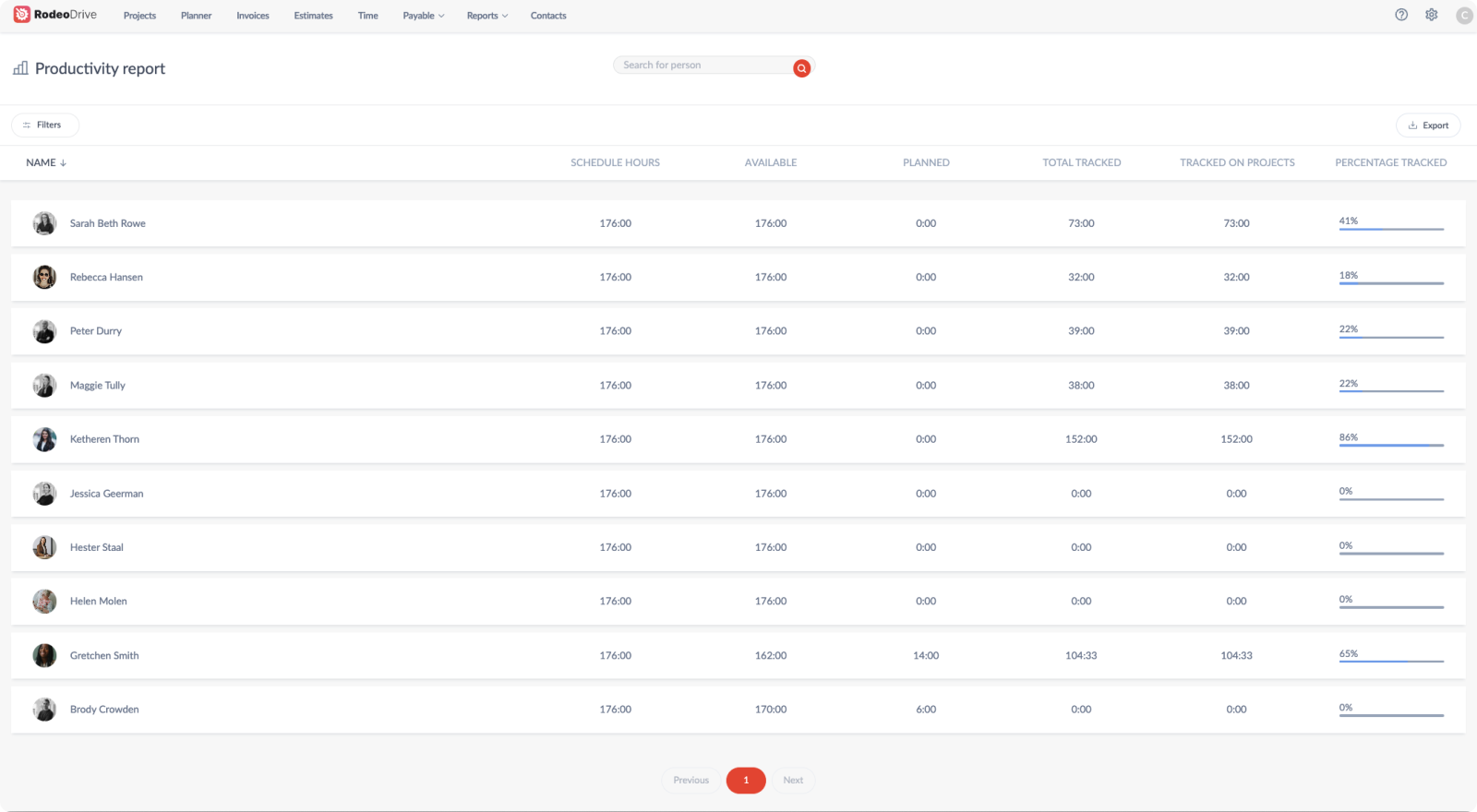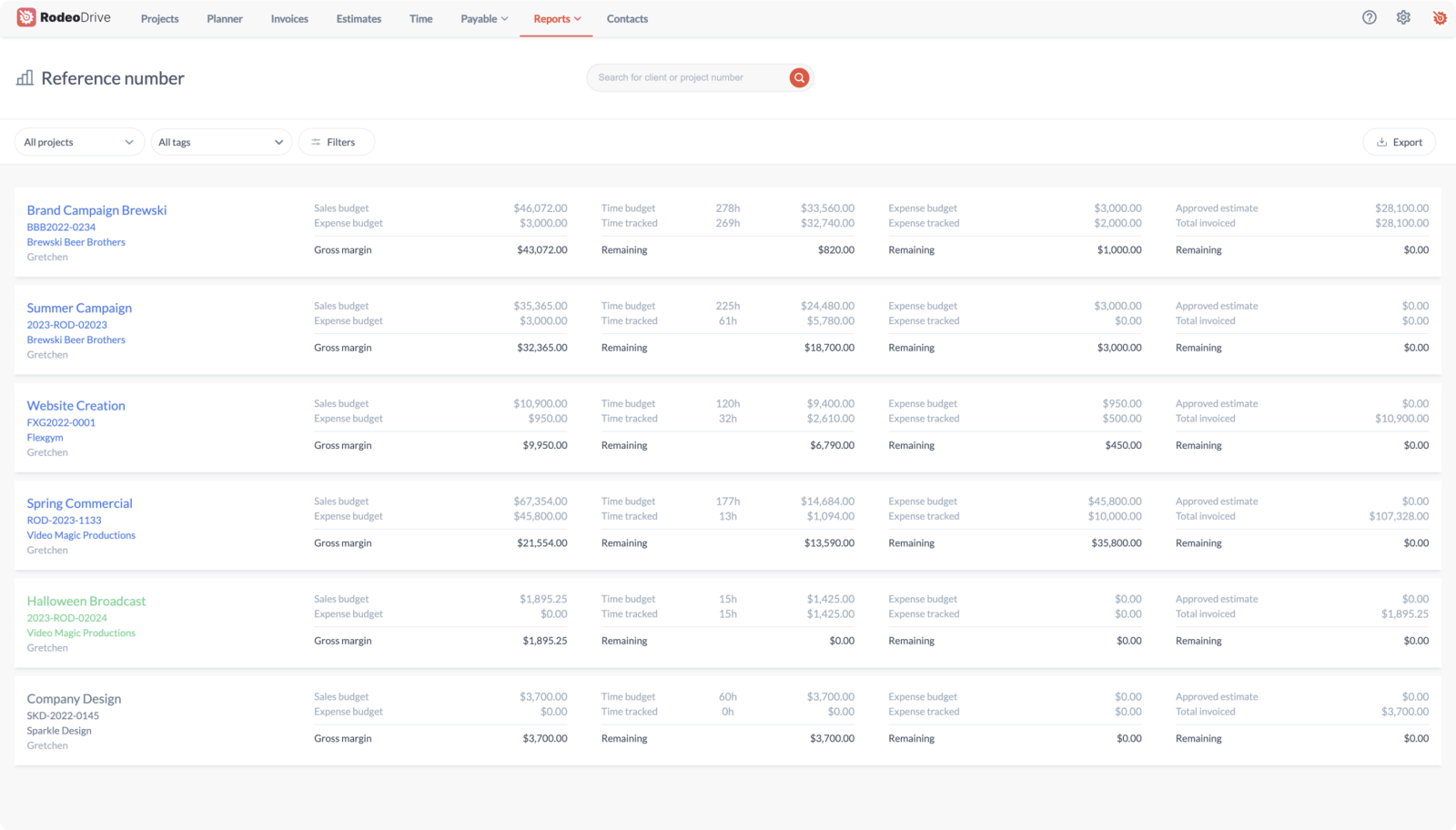The Ultimate Guide to Managing Projects Effectively
Project management is a huge undertaking. You’ll need to follow certain processes, select the right project team, and establish workflows. Not to mention there are thousands of methodologies to choose from to help guide you through the process, each with its own philosophies and practices.
In this guide, we’ll break down the ins and outs of project management, including what it is, the most popular methodologies, how to choose the right team, and our top tips.
By the end of this guide, you’ll have a robust understanding of what goes into effective project management. Let’s begin.
What is project management and why does it matter?
You might’ve heard the term ‘project management’ thrown around a lot these days, but many people aren’t totally sure what it means or looks like in practice.
Project management is the application of knowledge, experience, skills, and processes needed to achieve specific objectives. Whereas ‘management’ is an ongoing process, project management focuses on a set project with its own final deliverables and timeline.
In short, project management is the best way to produce the desired outcome within a specific timeframe, as it ensures that tasks are completed in a set sequence and workflows are overseen by a project manager.
Organizations of all sizes and industries will find that project management helps them to deliver high-quality results on time and stay organized along the way. And with the rise of project management software tools, managing the process has become easier than ever. Why wouldn’t you try out a technique with the potential to maximize team efficiency and profitability?
Related: Product Manager vs. Project Manager: Understanding the Differences
Process: The 5 phases of project management
While projects obviously vary considerably depending on a wide range of factors, all projects follow a 5-phase process. Here’s an overview of the project management phases you should be prepared to undergo:
1. Initiating
The project initiation phase involves establishing your project’s foundation. You’ll want to ensure you have a clear understanding of your project scope here – failure to understand what is and isn’t included in your objectives will make it extremely difficult to set goals.
Also make sure you understand the timeline that your stakeholders are expecting you to adhere to, as well as the budget you’ll need to produce high-quality results. If your project involves background research, be sure to add that to your to-do list as well.
If your project proposal has been approved, it's time to create your project charter. A project charter is a document where you’ll outline your objectives, project scope, and team management, so you and the team can reference it later on. A project charter template can help you get started.
Related: How to Write a Persuasive Project Proposal
2. Planning
Once your project has a strong foundation, the next step is to establish a structure and create a project plan for how you’ll actually go about getting the work done. Cementing your project budget and schedule is critical at this step. Once you know the time and resources at your disposal, you can begin setting milestones, planning your workflows, and outlining your deliverables.
During this phase, you should also select the project management methodology you’re going to use. There are dozens of options, but later in this guide, you’ll find an overview of the most popular choices.
This is also when you should select your team members and create a plan for team communication, which you can solidify by creating a project communication plan.

3. Executing
At this point, you’ve done all of the preparation – it’s time to actually get to work.
The project manager’s role goes from planner to manager during the project execution phase, as their responsibilities will shift to ensuring that milestones are being met and that communication is happening as planned.
Once the project execution phase begins, it’s a good practice to make sure that everyone is on the same page regarding what’s expected of them on an individual and team level, which can be done through a project kickoff meeting or a one-on-one with each team member.
Related: The 4 Ps of Project Management
4. Monitoring/controlling
Projects inevitably have discrepancies between where they are in the process versus where they should be according to the project timeline. Project managers must use the monitoring and control phase to closely watch project progress in order to identify bottlenecks that are causing the project to veer off track.

Check-ins and standup meetings are great tools for project monitoring, as well as visual tools like Kanban boards and Gantt charts – both of which are features found in many project management software options.
Related: 7 Steps to Best Track Project Budgets & Maximize Profits
5. Closing
The closing phase is when you actually present the final deliverables once all of the project objectives have been met. If the client or stakeholder is satisfied with your work, then the project can be officially closed.
It’s crucial to take time to analyze what went well throughout the project (and what didn’t) so you can improve for your next project. This type of reflection can be referred to as a post-mortem, project debrief, or lessons-learned meeting. Regardless of what you call it, be sure to evaluate the work your team produced on the quality, accuracy, and timeliness, and identify what you would’ve changed if you could redo the project.
Creating a project management checklist for yourself based on your learnings is another strategy to make the project management process easier for your next project.
.png)
Methodologies in Project Management
So, what’s a project management methodology, and why are they useful? Well, each methodology has its own set of principles and techniques to help structure projects and assist project managers by providing a baseline project management framework to operate with.
There are over 8,000 project management methodologies out there, and with so many options, it can be difficult to know which one is right for your project. Some work best for teams of a certain size or projects in a particular industry.
Below you’ll find an overview of the 10 most popular methodologies, which will serve as a starting point to help you decide which best meets your needs.
Agile
Agile project management is a flexible and collaborative methodology that allows project team members to iterate on the project while working on it rather than following a set-in-stone linear project plan.
This methodology typically involves short phases of work involving frequent testing that helps the team make data-driven adjustments to the project along the way.
You may want to try to implement agile project management if you’re leading a software development team or a team in need of a dynamic project management strategy. Agile projects are typically those that prioritize speed over perfection and are liable to change.
Kanban
Kanban is an agile framework wherein tasks are visually represented on a Kanban board, with each column on the board representing a different stage of the project. As a task progresses, all project team members will see the task move down the board.
A project manager utilizing this methodology will typically keep a backlog of tasks and add more tasks to the team Kanban board as team capacity increases at different points during the project. This task management strategy limits multitasking, allowing team members to focus on just a few items at a time and get them done faster.
Kanban methodology’s biggest strength is its visual nature, as this allows project managers to instantly gather status updates on progress and identify where bottlenecks are forming in their workflow. This makes it a good fit for creative teams or marketing agencies who prefer to visualize current tasks. That said, complex projects might be difficult to manage using Kanban boards.
Related: The Ultimate Guide for Creative Project Management in 2022
Waterfall
Waterfall methodology is perhaps the most straightforward and traditional way to manage projects. This method involves project progress flowing in one direction like a waterfall. Project managers completely plan a project before it begins, and each stage of the project must be fully completed before the next stage begins.
This methodology can be difficult to use if the project doesn’t go according to plan since it’s difficult to return to a previous stage once it's completed. As such, it tends to work best for teams whose goals and scope are clearly defined and will not change during the project.
For example, manufacturing and construction teams find waterfall methods useful, since the nature of their work makes it too costly to change parts of the project that are already completed.
Scrum
Scrum is a form of agile project management where work is split into short cycles known as “sprints” that last 1 to 2 weeks. A leader known as a “scrum master” – different than the project manager – leads the team through the sprint and leads daily scrum meetings to ensure the team is staying on track.
At the end of a sprint, the group reviews team performance and makes the necessary changes prior to embarking on the next sprint. This short-cycle approach makes Scrum a good fit for small teams of no more than 10 people who are focused on speed and need high flexibility.
Also read: Kanban vs. Scrum: Understanding the Key Differences
Lean
Lean methodology focuses on maximizing results and minimizing waste, which makes it a great fit for teams looking to decrease project costs and still deliver high-quality results. Because of its flexibility and ability to adapt as necessary, it’s a rather agile approach.
The lean strategy is built on identifying three kinds of waste: Mura, which refers to activities that eat up resources without adding value; Mura, which is the overuse of labor or equipment; and Mura, which is waste created by uneven workloads that decrease long-term efficiency.
The methodology was developed by Toyota for its manufacturing operations, but it has since been adopted to fit a variety of industries focused on developing products for the end user – like startups and software development teams.
Critical path
The critical path methodology involves identifying your project’s most important tasks in order to determine your project schedule. This method is ideal for projects with lots of dependencies that require a visual map of task sequences.
To employ the critical path method, a project manager must create a list of all necessary project tasks, an estimation of how long those tasks will take, as well as any task dependencies. Once this is complete, the longest sequence of critical project tasks becomes your critical path, which determines your project timeline.
Your critical path won’t be the only task sequence for your project, so along the way you’ll have milestones that indicate when it’s time to move to the next stage. Overall though, it’s important to avoid delays on your critical path since this path sets the entire project timeline.
Critical chain project management
Critical chain methodology is known as the more feasible alternative to critical path methodology. Critical path can be unrealistic in practice, as the length of time it takes to complete particular project activities can widely differ from estimates.
The critical chain method strives to compensate for this by allocating more time for the human errors inherent in project planning, such as delays and resourcing complications. In essence, this method incorporates more time buffers to prevent projects from getting completely derailed by unavoidable speed bumps.
Overall, this strategy is more focused on balancing resources instead of task ordering and scheduling, so it’s a good option for those who struggle with critical path planning.
Six Sigma
Six Sigma is a methodology focused on improving output quality by employing quality management strategies to eliminate defects, which is done by controlling variation in output. The idea is that processes that are more predictable are more profitable.
This methodology relies on the DMAIC roadmap, which is a five-step process for problem solving that stands for Define, Measure, Analyze, Improve, and Control. The idea is that you’ll repeat DMAIC until all defects within your project processes have been solved.
Six Sigma is undoubtedly one of the more complex project management methodologies, which makes leadership a critical component of proper implementation. Teams using Six Sigma should be led by a certified project manager.
PRINCE2
PRINCE2 stands for PRojects IN Controlled Environments, which is a structured certified methodology that takes a process-based approach focused on control and organization. PRINCE2 was originally developed by the UK government for IT projects, making it a popular choice in Europe.
This methodology is guided by 7 key principles, which dictate project board requirements, state that project responsibilities must be clearly defined, and how to break projects into stages. It also provides 7 phases for a project manager to follow once the project is underway.
PMBOK
PMBOK stands for Project Management Body of Knowledge, which consists of best practices, terminologies, and guidelines for all parts of project management and is overseen by the Project Management Institute (PMI).
PMBOK is more of a framework rather than a methodology, but the processes it outlines can be outfitted for a variety of projects. It helps project managers understand industry norms for project planning, scheduling, and executing projects. Many people associate it with the waterfall method, however, it can certainly be used alongside more innovative methodologies like the agile method.
12 tips for managing projects effectively
The right methodology will certainly provide the framework to set your workflows up for success. That said, there’s more to project management than simply choosing a methodology, and embarking on your first project as a PM is a daunting task.
Project management involves not only completing the necessary work to craft a high-quality deliverable, but also keeping your team – and yourself – motivated along the way, and adjusting your plans and timelines as necessary.
Here is a look at our top 12 tips to assist you in effectively managing your project.
Tip #1: Make sure your scope is realistic
Your project’s scope sets the boundaries for the project by establishing what is (and isn’t) included in your list of objectives. Scope is often solidified in a project statement of work, which is essentially a detailed description of all work that the project team will perform.
Firmly defining your scope early on in your project planning process is critical to avoid scope creep. This occurs when changes are made to the project requirements by stakeholders after the project has already begun, which leads to negative repercussions on the project timeline, deliverables, budget, and resource allocation.
Scope creep can describe many different scenarios, such as an increase in the number of project deliverables or a shift in a client’s goals that force you to change your project objectives and timeline. The best way to prevent scope creep from interfering with your project plan is by meeting with stakeholders to ensure everyone is on the same page from the very beginning.
Related: How to Create a Winning Marketing Project Plan
Tip #2: Identify the right milestones
Milestones are a powerful tool that serves as checkpoints to help project managers understand when activities have been completed or when a new phase is ready to begin. They keep teams aligned on priorities and overall progress, and even missed milestones can help project managers identify where and why bottlenecks are forming in the project management process.
It’s important to distinguish that milestones are not the same as goals, project phases, or tasks. Goals are forward-looking, whereas milestones serve as a way to reflect on the work that’s already been completed. Think of milestones as rungs on a ladder that you must climb to get to your goal.
Milestones are better described as checkpoints that might accompany the end of a phase rather than a project phase in its own right. Similarly, milestones can mark groups of related tasks as complete, but tasks and milestones are not the same things.
To create milestones for your project, examine your project schedule and identify the most critical moments throughout. This could include things like getting final approval on your creative concept that will mark a switch from the planning to the execution phase, for example.
The idea is for your milestones to depict your progress markers if you were to look at your project timeline without any tasks.

Tip #3: Create a risk management plan
Few projects ever go exactly according to plan, and risk management is a crucial part of making sure you’re never blindsided by a risk you should’ve anticipated. Creating a risk management plan that outlines every potential risk to a project’s success is the best way to be prepared.
Your risk management plan will have several parts, including risk identification, evaluation, assignment of risk ownership, responses to the risk, and a plan for monitoring and responding to new risks.
Your project risks should fall into three categories:
- Known risks: Obvious risks that are common among most projects, such as budgeting issues or limited resources.
- Unknown risks: Non-obvious risks that only members of upper management and other project stakeholders might have insight into.
- Unknowable risks: Completely unpredictable risks, such as an accident or an employee falling ill.
For each risk, you should consider the consequences that the risk would have on your project, as well as the probability of the risk occurring. The probability of the risk should determine what resources you need to allocate toward mitigating it.
Risk management plans also usually assign ownership of each risk, which is essentially just identifying who is responsible for monitoring and responding to each. Typical risk responses include pivoting your project to avoid the risk, transferring the risk to someone else, mitigating it, or accepting it and dealing with the consequences. A RAID log is another helpful tool in mitigating project risks.
Related: A Comprehensive Guide on How to Become a Project Manager
Tip #4: Practice good communication
Believe it or not, 30% of employees surveyed cited poor communication as the reason why they were unable to produce work on time. Communication is what keeps teams connected, and failure to properly communicate can cause project progress to stall.
You should be regularly meeting with your team to communicate updates on progress, that way you can support them if they encounter any roadblocks. Regular communication keeps everyone on the same page, making meeting expectations easier for everyone.
Project managers must also ensure they’re keeping the client and stakeholders updated on the project, and creating a project communication plan can make it easier to know when and how those updates should be distributed.
Related: A Guide to Project Communication Management
.png)
Tip #5: Manage your time efficiently
Time is one of your most important project resources, so it’s imperative that you use it wisely.
There are many methods to help you get more done during the 40-hour work week – one of which is time blocking. In its most basic form, time blocking involves penciling time in your calendar for each task on your to-do list rather than spreading yourself too thin and attempting to multitask throughout the day.
This method might be especially useful for project managers who are responsible for the logistical sides of the project in addition to the work itself. There are many other time management strategies that could also work – it just depends on preference.
Another time management technique to look into for all team members is time tracking. This allows project managers to see which tasks each person is working on, allowing them to better manage workloads.
Time tracking is especially useful for projects involving billable hours since many project management software tools with time tracking functionality are able to automatically create invoices for hours worked.

Tip #6: Get rid of distractions that disrupt productivity
In an era where working from home is increasingly common, most of us frequently battle distractions that threaten our productivity. Distractions can have big consequences for those working on a project, as projects often have strict timelines, which can be easily derailed if work falls behind.
Time management methods like time blocking can help eliminate distractions since they require you to block out a specific time window to complete a task. Other strategies include turning off notifications during your deep work time, or even strategically splitting your time so that you focus on independent shallow work while working from home and save your more collaborative tasks for the office.
Tip #7: Practice proper project documentation
Document absolutely everything during the project – you’ll thank yourself later. You never know if a client will ask for proof of hours worked or if a stakeholder will want more details on why you made a particular decision. When you document everything, you’ll always be able to promptly provide them with answers.
Documentation will also make your life easier if you experience any sort of staffing issues during the project. Having a record of everything each person is working on makes it easier for someone to take their place should they need to leave the team abruptly, for example.
Not only this, but it’s useful to have documentation to reflect on at the conclusion of the project. It’s much easier to think back on what went well and what didn’t when you have a record of everything that went on.
Tip #8: Encourage team collaboration
As they say, teamwork makes the dream work. While this might be a corny saying, there’s certainly some truth to the fact that team collaboration drives better brainstorming and ultimately better results.
Encourage team collaboration by conducting team-building activities and encouraging teammates to get to know each other. Physical changes like adopting an open office floor plan can help facilitate small talk to bounce ideas off one another.
.png)
Tip #9: Eliminate team conflict as soon as it arises
Conflict can be extremely damaging to your team dynamic, so it’s best to nip it in the bud before it grows into a larger issue.
Project managers can do this by bringing both parties together, listening to everyone’s perspectives, and determining the underlying issue that’s driving the conflict. Once this issue is identified, plan out some next steps for resolution or compromise.
These steps can also be taken in the event that conflict arises with the client – although that’s probably less likely to happen.
.png)
Tip #10: Automate your project management processes whenever possible
Project managers have enough on their plate already – they shouldn’t have to waste time on mundane tasks that can be automated using project management software.
For example, rather than having to manually calculate billable hours, a software option that takes care of the financial side of projects for you will save you time. Just think about all the hours you’d get back with a tool that can send recurring invoices for you rather than spending valuable time billing clients.
Or say you want to copy the budgeting framework from a previous project to your new project. Some software can automatically do this for you, which reduces the amount of time you have to spend getting your project set up.
Tip #11: Invest in the right project management tools
It can be impossible to manage projects without some sort of tool to assist you. There are many project management software options on the market, the question is, which tool best meets your needs?
Time tracking, task management, budgeting, and reporting are just a few popular features among many software tools that can drastically improve your workflows. If your team currently uses paper timesheets to track time, you’ll find that time tracking through an app is drastically easier and more accurate, since it’s more difficult to forget to log your hours.

The right tools can keep project managers clued into what each team member is working on in real time without the need for as many meetings. And reporting features help you to recognize patterns in your work that are negatively impacting productivity and adjust accordingly.
Also read: Choosing A Project Management Tool: 5 Essential Criteria
Tip #12: Condense your collection of software solutions
It’s tough to get anything done with too many cooks in the kitchen, and the same goes for having too many project management tools. Condensing your tech stack will both lighten your project budget and make your team more efficient.
Some teams juggle separate software tools for team collaboration, task management, finances, and time tracking, but this usually leads to scattered workflows and a frustrating reliance on integrations.
Consider looking into an all-in-one project management solution that offers every functionality you need in one place so you always have a single source of truth for your projects. Since all-in-one tools typically connect every piece of your project, you’ll be able to access detailed reports on your team’s productivity and profitability.
The dream team: 5 steps to building the right team for a project
You might have an extremely detailed project plan, but without the right team, your project is sure to fail.
There’s a lot to consider when building a project team, and the skills your team needs to be successful will depend on your project objectives and your selected methodology.
Regardless of the specifics of your project, we’ve curated a list of 5 steps to follow in order to build the right team for project success.
Step 1: Pick the right project manager
When searching for the right person to lead an important project, you usually have two options: a professional project manager (PM) or a subject matter expert (SME), which is essentially someone who is an expert in the project’s subject.
If you’re considering a professional PM, remember that certain methodologies require certifications. So if you’re looking to use the Six Sigma method, you’ll want a PM who is certified in this methodology at a high level, for example.
Investing in a professional PM can be incredibly beneficial during the initial project planning phase, as they know how to structure a project for success.
That said, SMEs are sometimes the more cost-effective option since their knowledge is more relevant to the work at hand beyond just planning and management duties.
Regardless of which direction you decide to take, make sure that whoever you select is capable of managing the day-to-day operations of the project, as well as the project’s schedule, scope, risks, finances, quality, and resources.
Related: Which Project Management Team Roles Are Key for Success?
Step 2: Set clear expectations
Project managers have enough on their plate – having to hold each team member’s hand throughout the project is not an efficient use of their time.
This is why it’s important to have a teamwide project kick-off meeting to outline expectations for the project, as well as steps to take when they encounter roadblocks along the way. Team members should have a clear understanding of what they’re expected to have completed by each milestone to ensure the project stays on track.
Having a written project communication plan that’s accessible to every team member is a good way to ensure everyone is on the same page regarding how frequently communication will occur and how often they can expect updates and check-ins with the project manager.
Step 3: Choose the right talent
When selecting the members of your project team, first take into account what skills you’ll need to deliver high-quality results. For example, a project that involves creating a TV commercial campaign will require copywriters, creative marketers, video editors, a director, etc. in order to deliver the final product.
Because many projects require a variety of skill sets, look to other departments within your organization for the necessary talent if possible, and consider how you can use freelancers to make up for skill gaps. Cross-functional teams are key to the success of many projects.
Team members who are familiar with working with certain project management methodologies might have an easier time adjusting to your project’s workflows, which could be another factor to consider.
Step 4: Set realistic goals
In order to avoid frustration and burnout, team members should feel as though their project goals are realistic and achievable.
This is not to say that the team’s goals shouldn’t be challenging – pushing each team member to their full potential is important. But ensure that each person’s goals are within reach to keep them feeling motivated for the duration of the project.

Step 5: Empower team members and hold them accountable
Building an empowered team means providing each individual with some level of responsibility and decision-making authority that makes them feel like a valued member of the group. Respecting everyone’s input is key to making team members feel motivated, which can turn them into trustworthy and reliable employees.
Team empowerment also goes hand in hand with team accountability. When team members feel a sense of ownership and responsibility for their work, it's easier for them to own up to missed deadlines or poor performance and make a plan to do better next time.
Project managers should also lay the groundwork for a culture of transparency by holding themselves accountable when they misstep as well.
Why use Rodeo Drive as your project management tool?

At Rodeo Drive, we believe that you shouldn’t have to rely on integrations to get all of the features you need in a software solution.
That’s why we’re an all-in-one platform with budgeting, time tracking, invoicing, and reporting tools to support you at every step of the process, from planning to execution to sending out that final client invoice.
Since all of our features are interconnected, you’ll find it extremely easy to assign a task to a team member, have them track time towards that task, and invoice the client for their time once the task is complete. Plus, once your project is underway, you’ll gain access to reports on registered hours, employee productivity, and the financial health of the project.
Here are some of the additional features we have to offer:
- Send client-ready, customizable project estimates straight from the platform
- Save time by reusing budget frameworks from previous projects
- Assign tasks to team members based on their availability
- Use Rodeo Drive’s planning function to manage team capacity and prevent burnout
- Access real-time budget updates to prevent overspending
- Integrate with QuickBooks (US) and Xero (UK) to help with your bookkeeping
Rodeo Drive can do it all, and we encourage you to come and see for yourself. Get started for free today.
Takeaway
There you have it – our ultimate guide for effective and successful project management.
While we’ve taught you a lot, there’s only so much you can learn about project management from an online article.
It’s time to get out there and test out different workflows and methodologies to get a feel for what works for you and refine your own project management skills. And remember – project management software tools can help ease the burden along the way.







